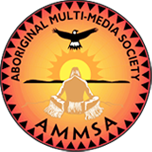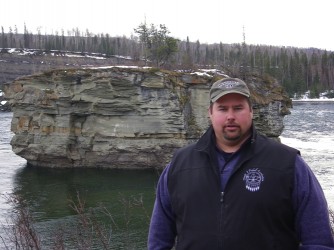Article Origin
Volume
Issue
Year
British Columbia Treaty 8 First Nations are furious. They say their right to meaningful consultation regarding the future development of a massive dam and hydroelectric generating station on their traditional land has been violated.
“We’re being railroaded,” claimed Chief Roland Willson of the West Moberly First Nation in northeastern, B.C.
“It’s totally disrespectful,” he said. “We’re not just stakeholders; we have a constitutional right to the area.”
On May 18, BC Hydro filed project documents with the federal and provincial governments, triggering the beginning of an extensive environmental assessment for the Peace River, B.C. site.
First Nations groups say their concerns have been overlooked by BC Hydro and the province and they are disappointed with the lack of transparency and consultation they have experienced throughout the planning process.
The Site C Clean Energy Project (Site C) is a proposed third dam and hydroelectric generating station on the river and it is part of the larger BC Hydro program to invest in and renew the province’s electricity system.
Subject to approvals, the BC Hydro Site C plan has been touted as a project that will provide a source of clean and renewable electricity for more than 100 years. They say it would provide enough energy to power more than 450,000 homes per year in B.C, and energy costs would be about $90 per megawatt hour compared to other resources costing nearly $130 per megawatt hour.
The large-scale project will cost taxpayers nearly $8 billion.
During stage two of the five-stage planning and development process for the Peace River Site C Project, the mandate was to initiate consultations with Treaty 8 First Nation communities and stakeholders, as well as initiate a technical review of the potential Site C Project.
As part of BC Hydro’s Stage 2 review, BC Hydro consulted with Doig River First Nation, Fort Nelson First Nation, Halfway River First Nation, Prophet River First Nation, Saulteau First Nation and the West Moberly First Nations, collectively known as BC Treaty 8 First Nations.
BC Hydro and Treaty 8 entered into a Consultation Agreement in December 2008. The agreement was designed to help guide the consultation process between parties. But First Nations groups say the consultation meetings have been nothing more than information sessions.
“It’s not a consultation process when you’ve already determined the outcomes of the process,” said Willson.
“They [BC Hydro] were already checking off some boxes that they had to do,” he maintains.
“Consulting us ‘after the fact’ is not consultation,” agreed Treaty 8 Tribal Chief, Liz Logan.
Logan says BC Hydro conveniently failed to discuss their stage two project reviews with them in a timely manner before filing it with federal and provincial departments.
“They called one of our project team members on May 16th saying that they were going to file on Wednesday May 18th and that they wanted to meet with Treaty 8 on Tuesday evening or Wednesday morning to “brief” us before they filed,” she explained, adding that Treaty 8 First Nations immediately contacted the Crown corporation to voice their surprise and disappointment at the announcement.
Logan suspects BC Hydro had the project description report (PDR) prepared well in advance and says First Nations should have been told much earlier that the company was nearing completion of stage two.
“The opportunity to consult with us on the PDR was not there and we therefore informed BC Hydro that they had violated our right to meaningful consultation on a project that would impact our rights and way of life,” she said.
But BC Hydro claims consultation has been ongoing and says the parties have met on 31 occasions and have exchanged more than 100 letters and 800 emails regarding the project.
“We’ve been consulting for well over two years,” explained Dave Conway, BC Hydro community relations manager, adding that as a Crown corporation, BC Hydro has “a duty to consult Aboriginal groups in regard to anything the Crown is doing where there is Aboriginal rights and title to land.”
But First Nations aren’t buying it.
“Let’s talk about what the content of the 31 meetings were,” said Willson, pointing out that holding meetings and actually engaging in balanced meaningful dialogue are two separate things.
But BC Hydro defends their consultation process and stresses that the Site C energy plan is needed for the province; especially concerning the high domestic load demands.
“We do need it. We could use it,” Conway said. “We’re already importing energy to meet our domestic need at this moment [and] we’re importing electricity at a high price to meet that demand.”
Conway says BC exports and imports energy between Alberta and the United States.
As part of stage two, BC Hydro says it consulted with stakeholders, the community, Aboriginal groups and property owners in the area. Site research was also conducted and studies were preformed to help understand the current conditions of the physical, biological and socio-economic environment.
The Site C project requires environmental certification and other permits and approvals before it can proceed to construction.
As well as consultation issues, environmental damage is also a concern to First Nations and environmentalists groups. While BC Hydro is branding the project as being a clean and renewable energy source, those who oppose the plan say it will be anything but clean.
“There is a whole array of environmental damage related to Site C , said George Heyman, executive director of Sierra Club BC, a non-profit environmental organization whose mission it is to protect British Columbia’s many varied animal species and ecosystems.
“In the absence of a comprehensive analysis of all potential clean energy sources in B.C. with a focus on the lowest possible environmental footprint, we believe it’s wrong [of BC Hydro] to proceed with a massive project, especially over the objections of First Nations and other local residents,” said Heyman.
“Much of the power from Site C is likely destined for new mining projects and the shale-gas extraction industry in northeast BC, an industry whose environmental risks, including fresh water overuse and contamination, are under growing scrutiny in BC and other jurisdictions,” he added. “Site C would flood 20 per cent of prime farmland in the Peace River Valley as British Columbians grow increasingly concerned about our future food security,” he explained.
“It’s the fragmentation of the land,” added Willson, who says environmental impacts of damming the Peace River will substantially affect grizzly bear migration and challenge various wildlife that use the lush region for nesting and birthing.
Willson says his community will continue to fight this plan but admits he feels his hands are tied.
“The provincial government has determined that they want it. BC Hydro has determined they want it... It’s rubber stamped,” he said.
Meanwhile the province and BC Hydro insist talks will continue with First Nation groups.
Rich Coleman, BC Minster of Energy and Mines was unavailable for an interview but in a ministry spokesperson said the consultation process concerning Site C is not over.
“Now that the Site C project is proceeding to the environmental assessment and regulatory review stage, BC Hydro engagement with First Nations will continue, with a greater focus on impact assessment, mitigation and accommodation,” the spokesperson stated.
“Government consultation with First Nations will take place through the environmental assessment and regulatory process. BC Hydro has recently submitted an updated project description to the EAO and Canadian Environmental Assessment Agency.
With the submission of the updated project description, the formal EA [environmental assessment] process can soon be initiated. The ministry understands that the BC Environmental Assessment Office (EAO) will soon be inviting potentially affected First Nations to participate in the EA process, including the technical working group, and will have opportunities to advise the EAO on how the updated project potentially affects their interests and treaty rights.”
“Consultation is an ongoing process,” Conway assured. “We will continue to consult Aboriginal groups through stage 3,” he promised.
Despite consultation promises, Treaty 8 First Nations leaders remain sceptical.
“It’s going to be the same,” Willson said regarding the lack of meaningful consultation. “And at the end of the day they will say everything is fine. It’s a joke.”
The Treaty 8 First Nations have taken their concerns to the United Nations, asking them to intervene on their behalf and urging them to remind Canadian governments of the United Nations Declaration on the Rights of Indigenous People, which Canada has endorsed.
For more information on BC Hydro Site C plan, go to www.bchydro.com
- 5596 views

